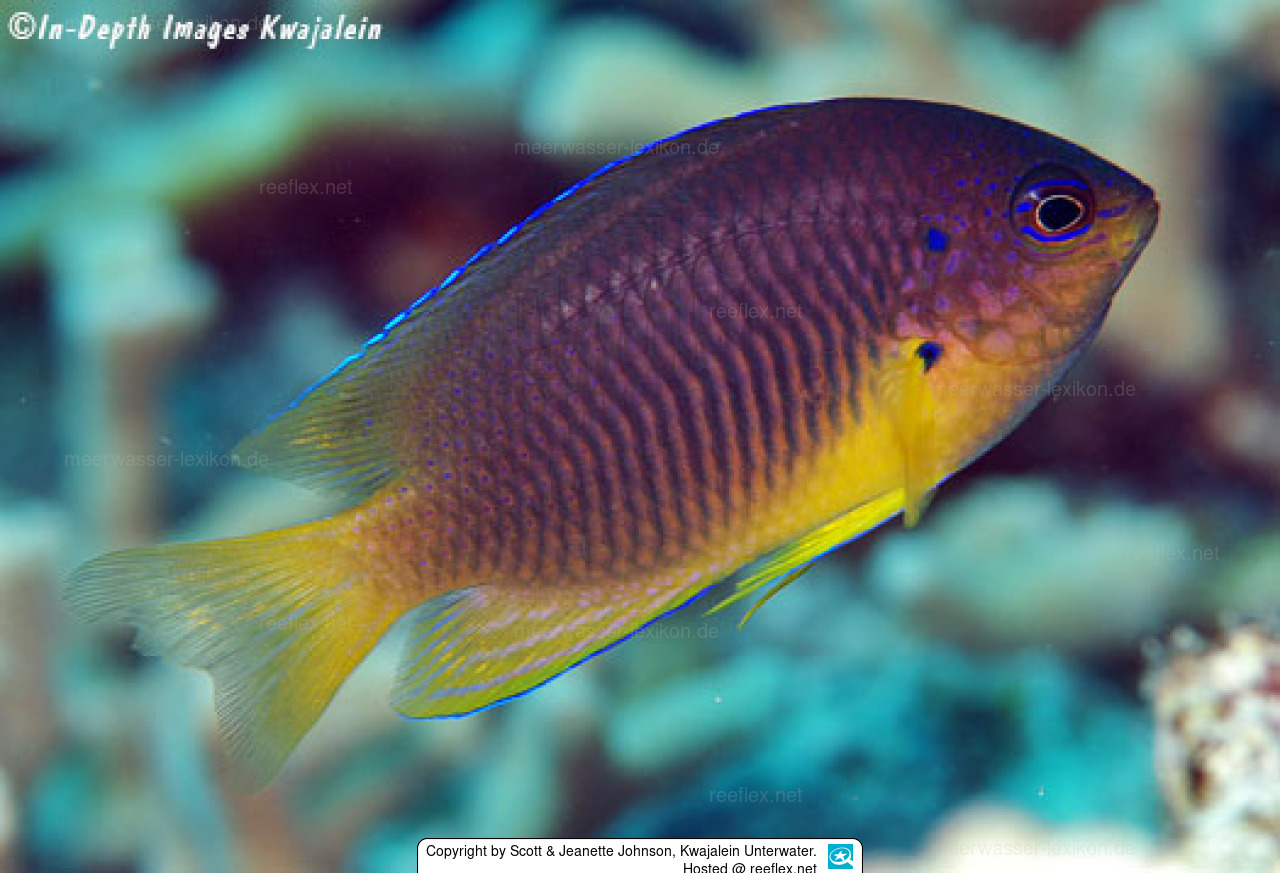Info
We like to thank Scott & Jeannette Johnson for their wonderful photos of Pomacentrus bipunctatus
Pomacentrus bipunctatus is only known from the Marshall Islands on the atolls Enewetak and Kwajalein as well as on Truk in the east of the Caroline Islands.
Adults are intensely colored due to the distinct separation of the two primary colors, blue and yellow, and would certainly be a real eye-catcher in any reef aquarium.
Juvenile animals still have to develop the colors and the clear separation, also the namesake spots on operculum and the upper pectoral fin base are not yet clearly visible.
Adults of Pomacentrus bipunctatus look similar to Pomacentrus spilotoceps from Fiji, but Pomacentrus bipunctatus differs in having fewer pectoral fin rays (17 versus 18 - 19) as well as distinct color differences in juveniles and subadult fish.
Juveniles of Pomacentrus spilotoceps lack the bright yellow coloration of the ventral portion of the body and adjacent fins.
Etymology:
The genus name "Pomacentrus" is from the Greek, "poma", - "atos" = lid, operculum and "kentron" = spine.
The species name "bipunctatus" refers to a pair of dark spots on the upper operculum and upper pectoral fin base, which are the most conspicuous feature of this species and are absent in other pomacentrids of the Marshall and Eastern Caroline Islands.
Pomacentrus bipunctatus is only known from the Marshall Islands on the atolls Enewetak and Kwajalein as well as on Truk in the east of the Caroline Islands.
Adults are intensely colored due to the distinct separation of the two primary colors, blue and yellow, and would certainly be a real eye-catcher in any reef aquarium.
Juvenile animals still have to develop the colors and the clear separation, also the namesake spots on operculum and the upper pectoral fin base are not yet clearly visible.
Adults of Pomacentrus bipunctatus look similar to Pomacentrus spilotoceps from Fiji, but Pomacentrus bipunctatus differs in having fewer pectoral fin rays (17 versus 18 - 19) as well as distinct color differences in juveniles and subadult fish.
Juveniles of Pomacentrus spilotoceps lack the bright yellow coloration of the ventral portion of the body and adjacent fins.
Etymology:
The genus name "Pomacentrus" is from the Greek, "poma", - "atos" = lid, operculum and "kentron" = spine.
The species name "bipunctatus" refers to a pair of dark spots on the upper operculum and upper pectoral fin base, which are the most conspicuous feature of this species and are absent in other pomacentrids of the Marshall and Eastern Caroline Islands.







 Scott & Jeanette Johnson, Kwajalein Unterwater
Scott & Jeanette Johnson, Kwajalein Unterwater























































































